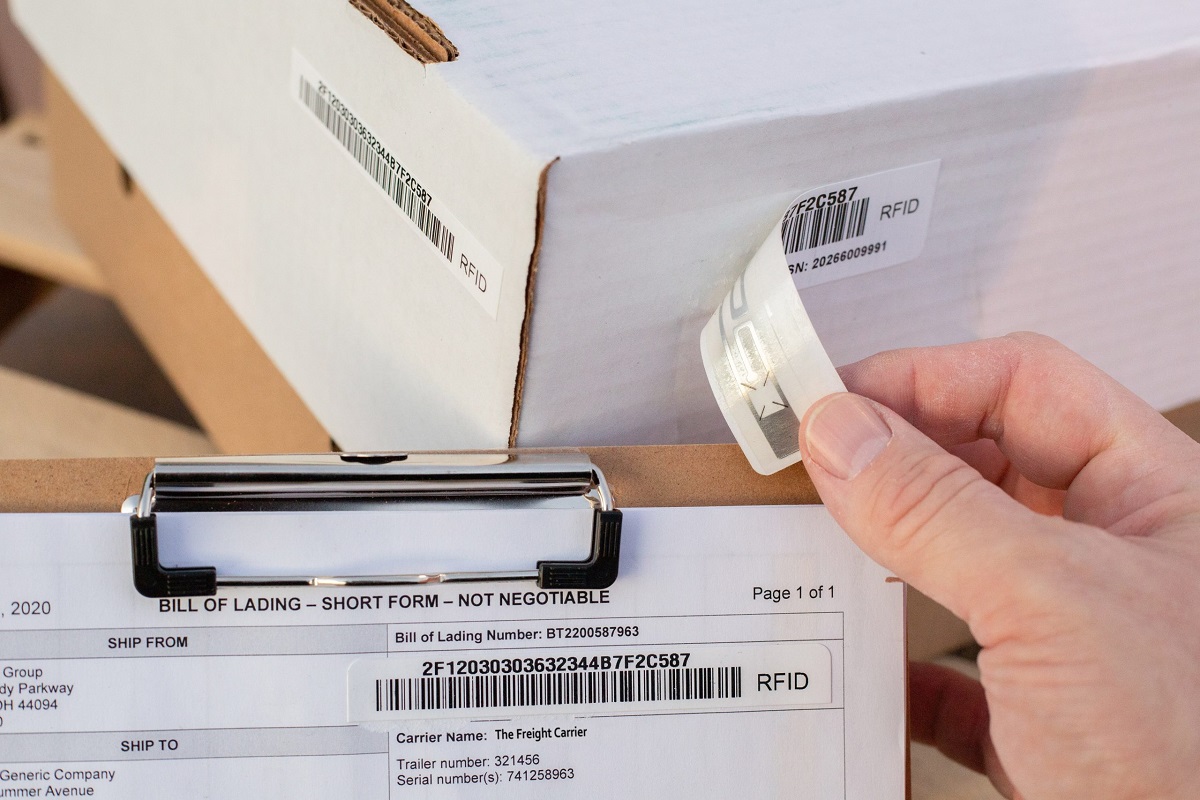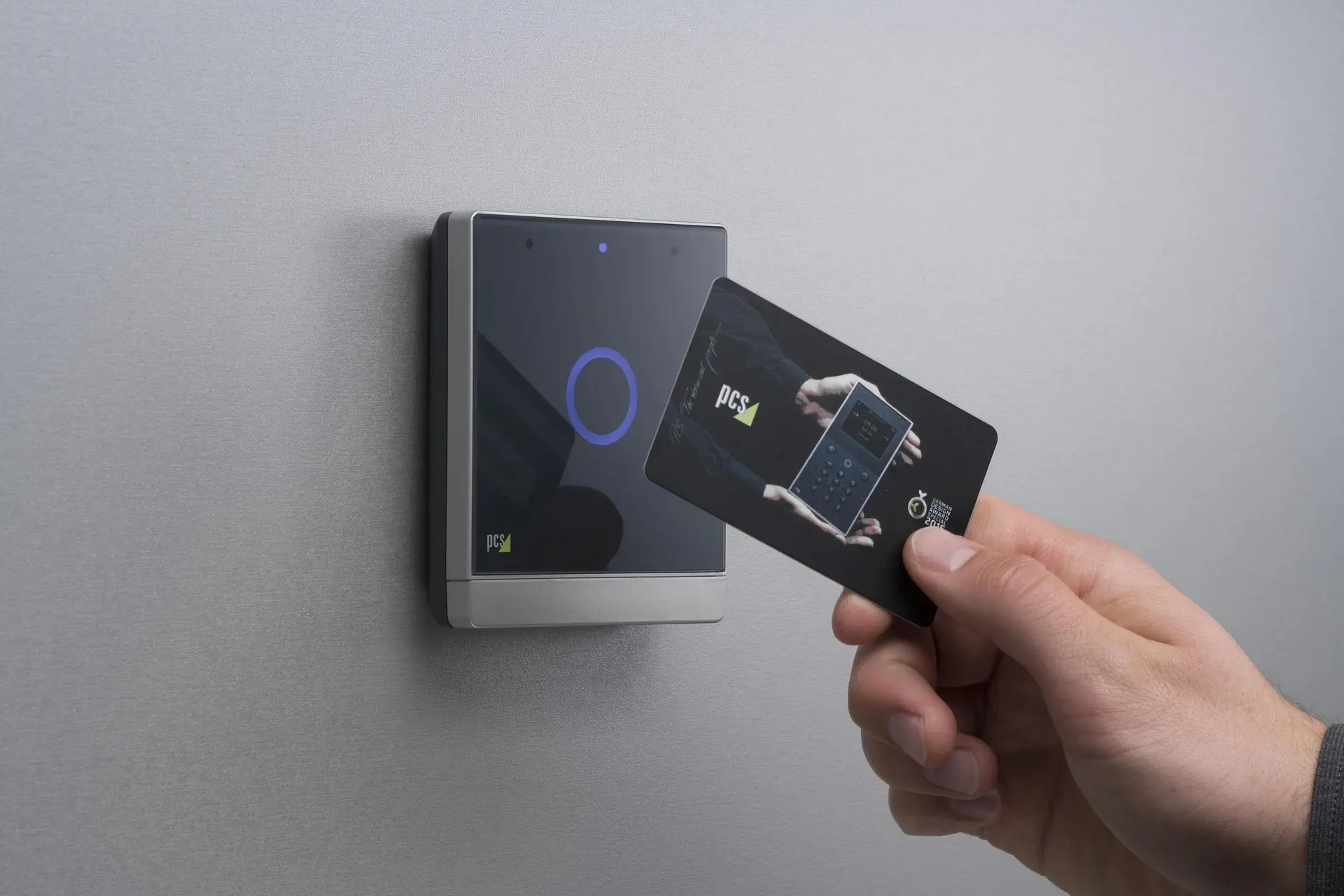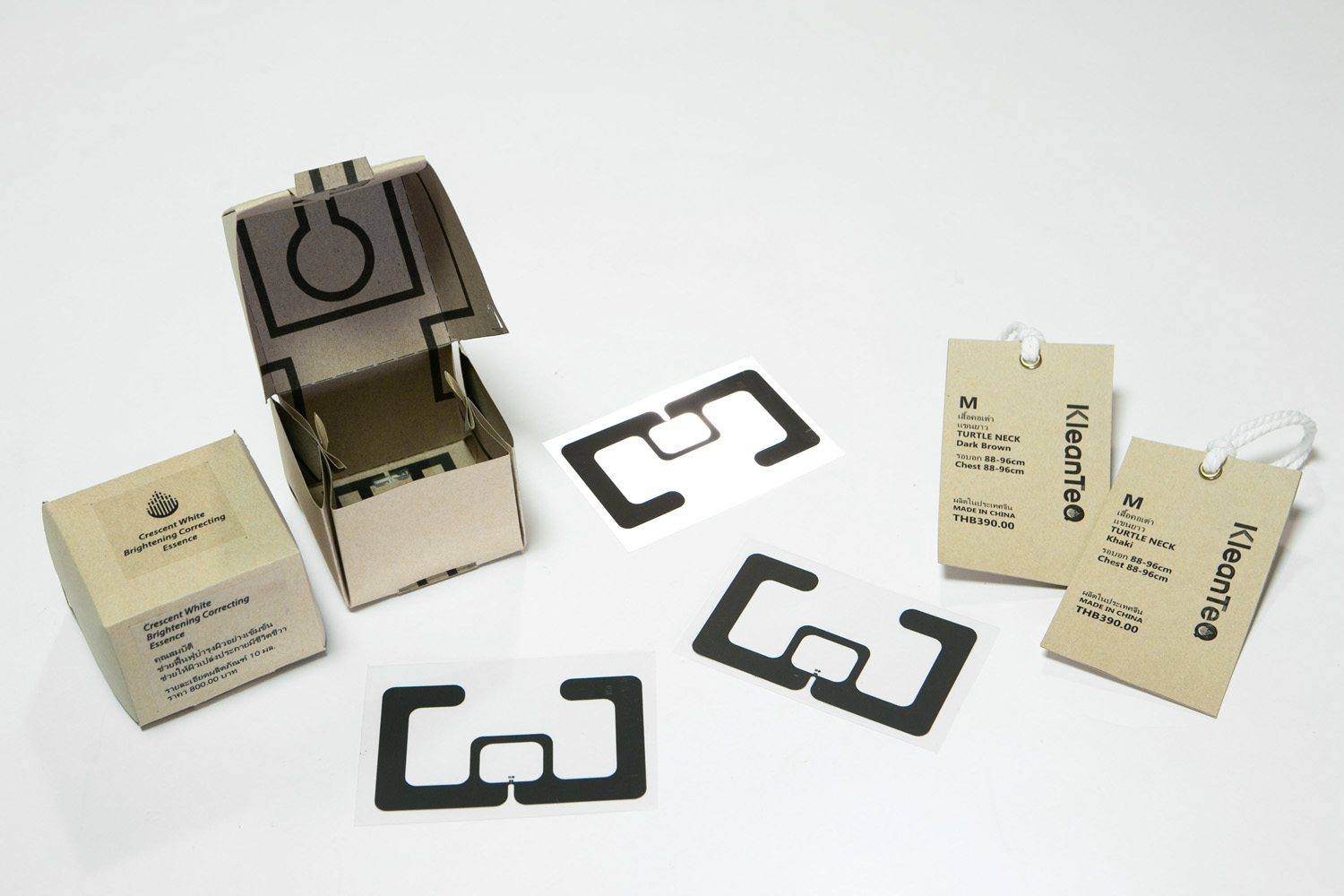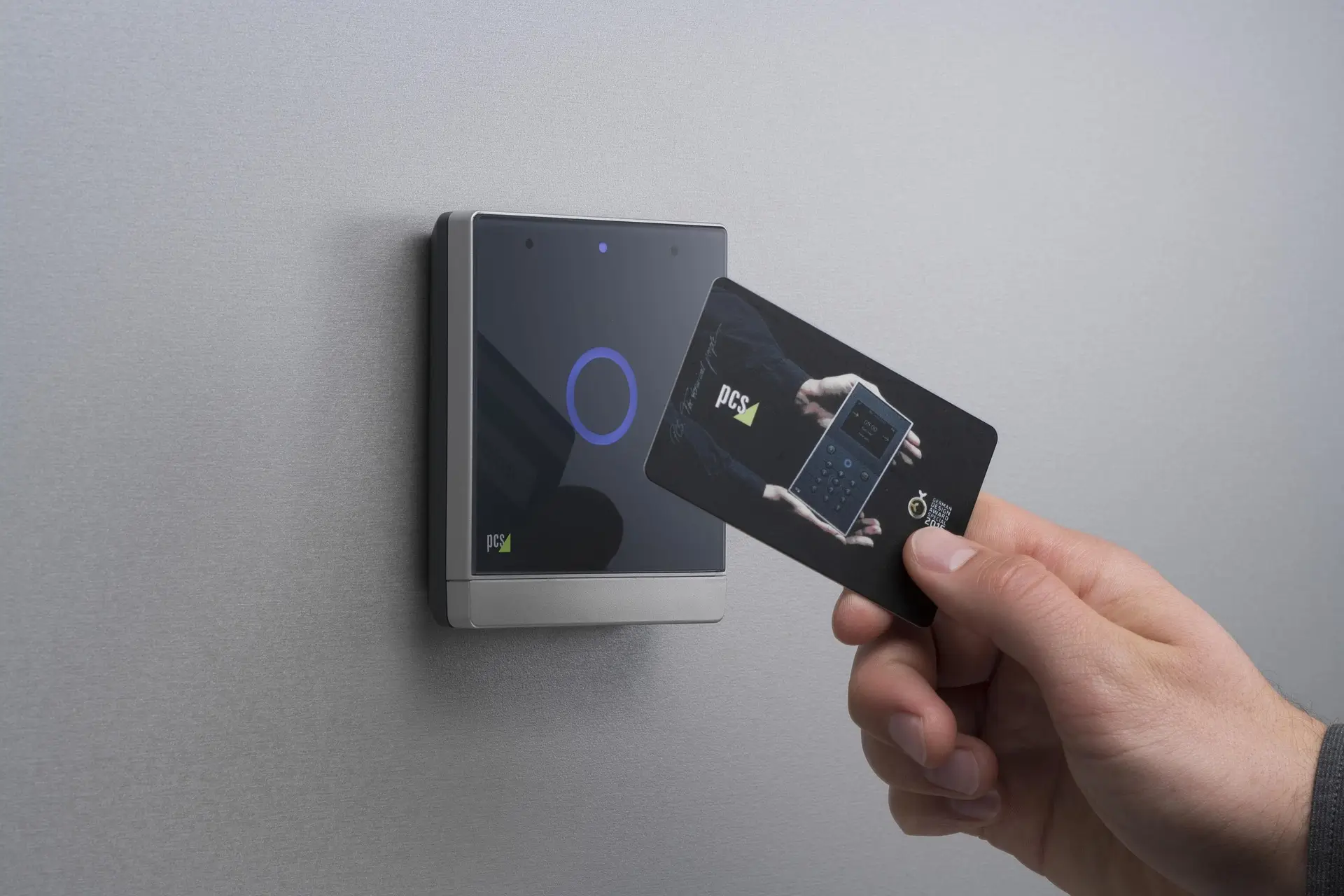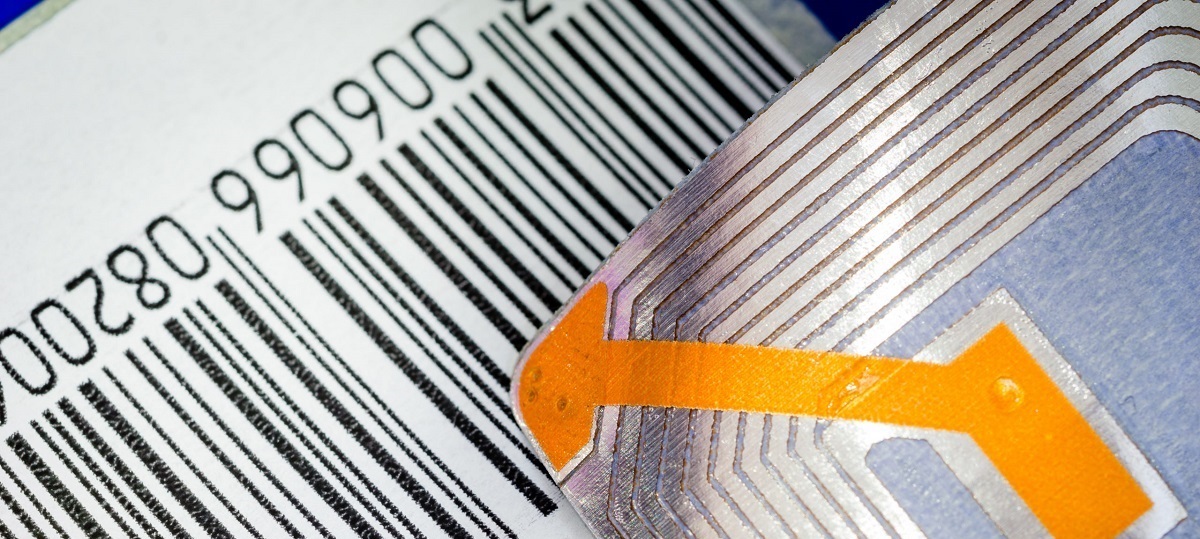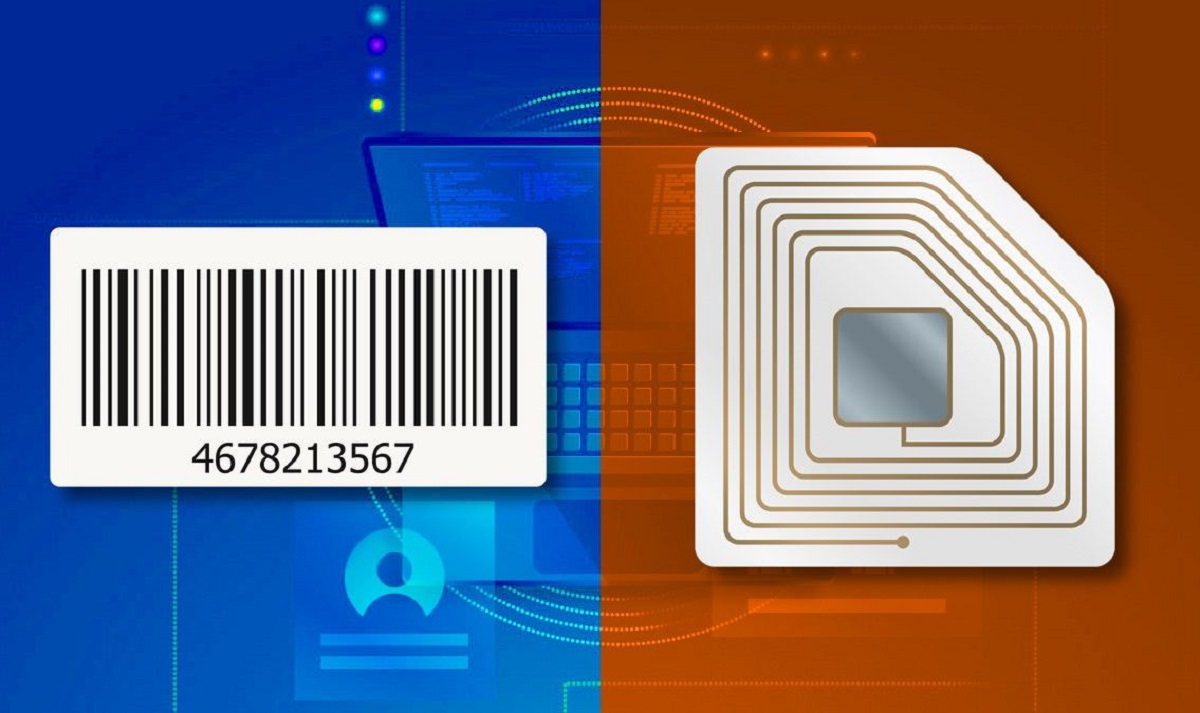Introduction
Welcome to the world of RFID tag tracking! In today’s tech-savvy era, keeping track of assets, inventory, and even living beings has become increasingly crucial for businesses and organizations of all sizes. This is where RFID (Radio Frequency Identification) tag tracking comes into play.
RFID technology has revolutionized the way we monitor and manage objects and individuals. From supply chain management and retail to healthcare and transportation, RFID tag tracking offers a myriad of benefits, including improved efficiency, accuracy, and real-time visibility.
But what exactly is RFID, and how does it work? In this article, we will delve into the fundamentals of RFID tag tracking, explore different types of tracking systems, discuss the challenges associated with RFID tag tracking, and provide best practices to ensure optimal performance.
Whether you’re curious about RFID technology or looking to implement a tracking system for your business, this article will serve as your comprehensive guide.
Without further ado, let’s dive into the world of RFID and discover how it can revolutionize your tracking processes.
What is RFID?
RFID, short for Radio Frequency Identification, is a technology that uses electromagnetic fields to automatically identify and track objects or individuals. It consists of two main components: an RFID tag and an RFID reader.
The RFID tag, also known as a transponder, is a small electronic device that contains a unique identifier and is attached to the object or person being tracked. The tag consists of a microchip, which stores the data, and an antenna, which enables communication with the RFID reader.
On the other hand, the RFID reader is a device that emits radio frequency signals and captures the response from the RFID tag. It acts as a bridge between the physical world and the digital system, allowing the data stored in the tag to be extracted and processed.
RFID technology offers several advantages over traditional barcode systems. Unlike barcodes, which require a direct line of sight and manual scanning, RFID tags can be read wirelessly, even from a distance. This eliminates the need for manual intervention and allows for faster and more efficient tracking.
Furthermore, RFID tags can store more data compared to barcodes, making them suitable for applications that require extensive information. The ability to write and rewrite data on RFID tags also allows for dynamic updates, enhancing flexibility and adaptability.
RFID technology is widely used in various industries and sectors. It has found applications in supply chain management, asset tracking, inventory management, access control, healthcare, and many more. The versatility and scalability of RFID make it a valuable tool for organizations seeking to streamline operations and enhance efficiency.
In the next section, we will explore how RFID tags work and the different tracking systems that utilize this technology. So, let’s move on and unveil the inner workings of RFID tag tracking.
How Do RFID Tags Work?
RFID tags are designed to transmit and receive data using radio frequency signals. They rely on the principle of electromagnetic coupling to establish communication with an RFID reader. Understanding how RFID tags work is essential to grasp the mechanics behind RFID tag tracking.
When an RFID tag comes into the range of an RFID reader, the reader emits a radio frequency signal. This signal energizes the tag’s microchip, activating it. The energized microchip then sends back a response signal to the reader, containing the unique identifier and any other data stored on the tag.
The communication between the RFID tag and reader is facilitated through electromagnetic waves. The reader generates an electromagnetic field, which induces a current in the tag’s antenna. This current powers the tag’s microchip and allows it to transmit the data back to the reader.
There are two main types of RFID tags: passive and active tags.
1. Passive RFID Tags: Passive RFID tags do not have their own power source. Instead, they rely on the energy harvested from the reader’s signal to power the microchip and transmit the response signal. Passive tags are cost-effective and smaller in size, making them suitable for various applications such as asset tracking and inventory management.
2. Active RFID Tags: Active RFID tags, on the other hand, have their own power source, usually in the form of a battery. This allows active tags to emit a stronger signal and have a longer communication range compared to passive tags. Active tags are typically used when real-time and long-range tracking is required, such as in vehicle tracking or locating high-value assets.
Another important aspect of RFID tag tracking is the frequency at which the tags and readers operate. RFID systems can operate in low frequency (LF), high frequency (HF), or ultra-high frequency (UHF) bands.
– Low-Frequency (LF): LF RFID systems operate in the range of 125 kHz to 134 kHz. They offer short communication ranges but are less affected by environmental factors such as moisture or metal objects. LF tags are commonly used for access control, animal tracking, and proximity applications.
– High-Frequency (HF): HF RFID systems operate at a frequency of 13.56 MHz. They provide better read ranges compared to LF systems and offer faster data transfer rates. HF tags are commonly used for applications such as smart cards, payment systems, and library book tracking.
– Ultra-High Frequency (UHF): UHF RFID systems operate in the range of 860 MHz to 960 MHz. They offer long communication ranges and high data transfer rates. UHF tags are widely used in supply chain management, inventory tracking, and logistics.
Now that we’ve covered the basics of how RFID tags work, let’s explore the different types of RFID tag tracking systems in the next section.
Types of RFID Tag Tracking Systems
RFID tag tracking systems can be categorized into two main types: proximity-based tracking systems and real-time location systems (RTLS). Each type offers unique capabilities and is suitable for specific applications.
1. Proximity-based Tracking Systems:
Proximity-based tracking systems utilize RFID technology to determine the presence or absence of tagged objects or individuals within a defined area. These systems are commonly used for access control, attendance tracking, and asset management. Here are two common types of proximity-based tracking systems:
- Fixed Reader Systems: This type of system involves fixed RFID readers strategically placed at entry points or designated areas. When an RFID tag comes into the range of a reader, the system detects its presence and records the event. Fixed reader systems provide valuable insights into asset movements and employee attendance.
- Handheld Reader Systems: Handheld RFID readers enable mobility and flexibility in tracking assets or performing inventory management. The user can move around and scan RFID tags using a portable device. Handheld reader systems are commonly used in retail, healthcare, and warehouse environments.
2. Real-Time Location Systems (RTLS):
RTLS involves tracking the real-time location of tagged objects or individuals within a specified area. RTLS utilizes a network of RFID readers and other infrastructure components to provide accurate and continuous tracking information. Here are two common types of RTLS:
- Active RFID Systems: Active RFID systems utilize active RFID tags with their own power source and a longer range. These tags emit a signal at regular intervals, which is captured by the readers to determine the location of the tagged object or person. Active RFID systems are employed in applications that require real-time tracking and monitoring, such as asset tracking in large facilities or personnel tracking in hazardous environments.
- Passive RFID Systems: Passive RFID systems are commonly used for inventory management and tracking assets within a confined space. They use passive RFID tags that are powered by the reader’s signal. The tags have limited range but are cost-effective and suitable for tracking high volumes of items in retail stores or warehouses.
Each type of RFID tag tracking system has its own advantages and limitations, depending on the specific requirements of the application. It’s important to carefully assess the needs and constraints of your tracking project to choose the most suitable system.
In the next section, we will discuss the difference between passive and active RFID tags, which is an important factor to consider when selecting an RFID tag tracking system.
Passive vs Active RFID Tags
When it comes to RFID tag tracking, one important decision to make is whether to use passive or active RFID tags. Each type offers distinct features and benefits, and understanding their differences is crucial in selecting the right solution for your tracking needs.
Passive RFID Tags:
Passive RFID tags are the most common type of RFID tags used in various industries. These tags do not have their own internal power source and rely on the energy transmitted by the RFID reader to power them. Here are some key characteristics of passive RFID tags:
- Range: Passive RFID tags have a shorter read range compared to active tags. Typically, they can be read from a few centimeters up to a few meters, depending on the reader’s power and environmental factors.
- Cost: Passive RFID tags are generally more affordable than active tags, making them a cost-effective choice for large-scale deployments or applications that require tagging numerous items.
- Size: Passive RFID tags are usually smaller in size and can be easily integrated into various objects without adding significant weight or bulk.
- Usage: Passive RFID tags are commonly used for inventory management, asset tracking, access control, and retail applications. They are ideal for applications that do not require real-time tracking or long reading distances.
- Read Time: Passive tags have a slower read time compared to active tags. When a passive tag comes into the range of an RFID reader, it requires a fraction of a second to be powered, read, and responded to.
Active RFID Tags:
Active RFID tags, as the name suggests, have their own internal power source, usually a battery. This power source enables them to actively emit signals, providing a longer read range and additional features. Here are some key characteristics of active RFID tags:
- Range: Active RFID tags have a significantly longer read range compared to passive tags. They can be read from tens to hundreds of meters away from the reader, depending on the reader’s power and environmental conditions.
- Cost: Active RFID tags are generally more expensive than passive tags due to the additional components and battery included. They are suitable for applications that require long-range tracking or real-time monitoring.
- Size: Active RFID tags are typically larger in size compared to passive tags due to the battery and additional circuitry. This can be a consideration when integrating them into certain objects or assets.
- Usage: Active RFID tags are commonly used for real-time location tracking of assets, vehicles, and personnel. They are ideal for applications that require continuous monitoring, such as supply chain management, logistics, and security.
- Read Time: Active tags have a faster read time compared to passive tags. They are always emitting signals, making them instantly readable by nearby readers.
Deciding between passive and active RFID tags depends on various factors, including the desired read range, cost, size limitations, and tracking requirements of your specific application. Evaluating these factors will help you choose the most suitable RFID tag tracking solution.
In the next section, we will discuss some important factors to consider when choosing an RFID tag tracking system.
Factors to Consider When Choosing an RFID Tag Tracking System
When selecting an RFID tag tracking system for your specific needs, it’s essential to consider several factors to ensure optimal performance and successful implementation. Here are some key factors to consider:
- Application Requirements: Start by assessing the specific requirements of your tracking application. Consider factors such as the desired read range, the number of items to be tracked, the environment in which tracking will take place, and any specific features or functionalities needed.
- Tag Type: Choose between passive and active RFID tags based on your application requirements. Passive tags are suitable for short-range tracking and cost-effective deployments, while active tags offer longer reading distances and real-time tracking capabilities.
- Reader Capability: Ensure that the RFID reader you choose is compatible with the tag type you plan to use. Verify that the reader’s frequency range matches the frequency of the tags and that it supports the required read range and data transfer rate.
- Scalability: Consider the scalability of the RFID tag tracking system. Will it be able to handle your current tracking needs, as well as potential future expansions? Look for systems that can be easily expanded and integrated with other technology systems, such as enterprise resource planning (ERP) software or inventory management systems.
- Integration: Evaluate the ease of integration with existing systems or processes. Determine if the RFID tag tracking system can seamlessly integrate with your current infrastructure, such as software applications, databases, or other tracking technologies.
- Data Management: Consider how the system handles and manages the collected data. Look for features like real-time data synchronization, data storage capabilities, and the ability to generate customized reports and analytics. Ensure that the system can provide the data insights you need to make informed decisions.
- Cost: Determine the upfront costs involved in implementing the RFID tag tracking system, including the cost of tags, readers, infrastructure, and any additional software or hardware components. Consider the long-term costs, such as tag replacement, maintenance, and support fees.
- Reliability and Durability: Ensure that the RFID tags and readers are designed to withstand the environmental conditions of your tracking application. Consider factors such as temperature, moisture, dust, and physical stress. Reliability and durability are essential to ensure consistent tracking performance over time.
- Regulatory Compliance: If your tracking application involves sensitive or regulated data, ensure that the RFID tag tracking system complies with relevant industry standards and regulations, such as data privacy laws or healthcare compliance requirements.
By carefully considering these factors, you can choose an RFID tag tracking system that aligns with your specific needs and objectives. The right system will enable you to optimize efficiency, improve accuracy, and streamline your tracking processes.
In the next section, we will explore some common applications for RFID tag tracking to showcase the versatility of this technology.
Common Applications for RFID Tag Tracking
RFID tag tracking has a wide range of applications across various industries and sectors. The ability to accurately and efficiently monitor the location and movement of objects or individuals has made RFID technology invaluable in improving operations and enhancing performance. Here are some common applications of RFID tag tracking:
- Supply Chain Management: RFID tag tracking is widely used in supply chain management to monitor the movement of goods from production to distribution. It enables real-time tracking of inventory, improves visibility, reduces errors, and enhances overall supply chain efficiency.
- Asset Tracking: RFID tags are commonly used for asset tracking in industries such as manufacturing, construction, healthcare, and logistics. With RFID tag tracking, organizations can easily locate and manage their assets, reducing the time spent searching for valuable equipment or inventory.
- Inventory Management: RFID technology offers significant advantages in inventory management. By tagging items with RFID tags, businesses can quickly and accurately perform inventory counts, automate stock replenishment, and prevent stockouts or overstocking. This leads to optimized inventory levels and improved supply chain performance.
- Retail: In the retail industry, RFID tag tracking is utilized for inventory management, theft prevention, and enhancing the customer shopping experience. By implementing RFID tags on clothing items, for example, retailers can quickly locate specific products, ensure accurate stock levels, and provide a seamless checkout process.
- Healthcare: RFID tag tracking is increasingly being adopted in healthcare settings to improve patient safety, asset tracking, and inventory management. RFID tags are used to track medical equipment, monitor patient flow, and manage medication inventory, streamlining processes and enhancing overall efficiency.
- Logistics and Transportation: RFID tag tracking enables accurate and efficient tracking of goods throughout the transportation process. It helps monitor the movement of shipments, streamline warehouse operations, and improve logistics and supply chain visibility. RFID tracking also plays a significant role in tracking and managing parcels and packages in the courier and postal industry.
- Access Control: RFID technology is widely used for access control in buildings, parking lots, and restricted areas. By using RFID tags or cards, individuals can gain authorized access, increasing security levels and allowing for efficient tracking of employee movement within a facility.
- Livestock and Animal Tracking: RFID tag tracking is utilized in agriculture and livestock management to track and monitor animals. RFID tags are attached to livestock, allowing farmers to monitor their health, location, and movement. This information is vital for determining breeding patterns, managing herds, and ensuring the safety and well-being of the animals.
These are just a few examples of the diverse applications of RFID tag tracking. The versatility and flexibility of RFID technology make it a valuable tool for streamlining operations, improving visibility, and enhancing overall efficiency across industries.
In the next section, we will walk you through the steps involved in tracking an RFID tag.
Steps to Track an RFID Tag
Tracking an RFID tag involves several steps that allow for the identification and monitoring of an object or individual. While specific implementation may vary depending on the RFID system used, here are the general steps involved in tracking an RFID tag:
- Tagging: Start by attaching an RFID tag to the object or individual you want to track. This may involve affixing the tag to an item, embedding it in a product, or wearing it as a wearable tag. The tag should be securely attached and positioned to ensure accurate reading during tracking.
- Reader Setup: Set up the RFID reader in the desired location. This may involve connecting the reader to a power source and configuring any necessary settings, such as read range, frequency, or data collection parameters.
- Reader Activation: Power on the RFID reader to start scanning for nearby RFID tags. The reader will emit radio frequency signals to energize and communicate with the tags within its range.
- Data Collection: As the RFID reader scans the area, it will detect the presence of nearby RFID tags and collect the data encoded in each tag. The data may include the unique identifier of the tag, as well as any additional information stored on the tag, such as serial numbers, product details, or location data.
- Data Processing: The collected data from the RFID tags is processed by the RFID reader or transmitted to a backend system for further analysis. The data can be stored, analyzed, or used to trigger specific actions based on predefined rules or business logic.
- Location Determination: If real-time location tracking is required, an additional step involves determining the precise location of the tagged object or individual. This can be done by using multiple RFID readers strategically placed in the environment and triangulating the signal strength or by integrating other technologies such as Wi-Fi or GPS to enhance location accuracy.
- Monitoring and Reporting: Once the RFID tag is tracked and its data collected, it can be monitored and reported on through software applications or dashboards. This allows for real-time visibility into the location, status, or movement of the tagged items or individuals. Reports can be generated to provide insights, trends, or analytics for informed decision-making.
These steps provide a general overview of the process involved in tracking an RFID tag. Depending on the specific application and requirements, additional steps or customization may be necessary. However, by following these basic steps, organizations can leverage RFID technology to improve tracking capabilities and optimize operational efficiency.
In the next section, we will discuss some of the challenges associated with RFID tag tracking and how they can be overcome.
Challenges of RFID Tag Tracking
While RFID tag tracking provides numerous benefits, it also presents some challenges that organizations need to be aware of and overcome for successful implementation. Here are some common challenges associated with RFID tag tracking:
- Read Range Limitations: The read range of RFID tags can be affected by various factors such as interference, tag orientation, and the presence of other objects. Ensuring consistent and reliable tag detection across different environments and conditions can be a challenge.
- Tag Interference: In certain situations, RFID tags in close proximity to each other can interfere with each other’s signal, leading to false readings or incomplete data capture. This can be mitigated through proper tag placement, tag orientation, and the use of anti-collision algorithms.
- Data Accuracy: Achieving high data accuracy can be challenging, especially when tracking a large number of tags simultaneously. Factors such as tag misreads, signal reflection, or environmental noise can impact the accuracy of the collected data. Implementing quality assurance measures and deploying robust reader infrastructure can help mitigate these challenges.
- Tag Reliability and Durability: RFID tags may face physical wear and tear, exposure to harsh environmental conditions, or damage during handling or transit. Ensuring the durability and reliability of the tags becomes crucial to maintain tracking accuracy over time. Selecting suitable tag materials and designs compatible with the intended application can help address this challenge.
- Integration with Existing Systems: Integrating RFID tag tracking systems with existing infrastructure, such as databases, software applications, or business processes, can be complex. Compatibility issues, data synchronization, and system interoperability need to be carefully addressed to ensure seamless integration and streamlined data flow.
- Cost: Implementing RFID tag tracking systems can involve upfront costs for tags, readers, infrastructure, and software. Ongoing costs may be incurred for maintenance, tag replacement, and system upgrades. Balancing the investment with the expected benefits and return on investment is an important consideration.
- Privacy and Security: RFID tag tracking involves the collection and management of data, necessitating measures to protect privacy and ensure data security. Data encryption, access control mechanisms, and compliance with relevant privacy regulations are crucial to address security concerns.
Overcoming these challenges requires proper planning, careful system design, ongoing monitoring, and optimization. By considering these challenges from the start, organizations can implement effective strategies and solutions to maximize the benefits of RFID tag tracking.
In the next section, we will discuss some best practices to consider for successful RFID tag tracking implementation.
Best Practices for RFID Tag Tracking
Implementing RFID tag tracking requires careful planning, execution, and ongoing management to ensure optimal performance. Here are some best practices to consider for successful RFID tag tracking implementation:
- Define Clear Objectives: Clearly define the tracking objectives and the expected outcomes. Identify the specific use cases, data requirements, and performance metrics that will determine the success of the RFID tag tracking system.
- Conduct a Pilot Program: Before full-scale implementation, conduct a pilot program to test the tracking system in a controlled environment. This helps identify potential challenges, validate the system’s effectiveness, and make necessary adjustments before committing to a large-scale deployment.
- Choose the Right Tags and Readers: Select RFID tags and readers that are suitable for the specific application and environment. Consider factors such as range, read speed, durability, and compatibility with existing infrastructure. Test different tag and reader combinations to optimize performance.
- Tag Placement and Orientation: Proper tag placement and orientation play a critical role in achieving accurate and consistent tag detection. Consider the material, shape, and position of the tagged objects to maximize read rates and minimize interference.
- Implement Quality Control Measures: Establish quality control processes to ensure the accuracy and reliability of the collected data. Regularly monitor tag reads, conduct spot checks, and perform data validation to identify and address any potential issues or errors.
- Train and Educate Users: Provide training and education to the users of the RFID tag tracking system. This includes proper tag handling, understanding system capabilities, troubleshooting common issues, and adhering to best practices to ensure effective and efficient tracking.
- Regular Maintenance and Calibration: Regularly calibrate and maintain the RFID readers and infrastructure to ensure optimal performance. Clean and inspect the readers and antennas, replace worn-out components, and keep the system up to date with the latest firmware or software upgrades.
- Data Management and Security: Implement robust data management practices to securely collect, process, and store the tracking data. This includes data encryption, access controls, and regularly reviewing the data privacy and security protocols to comply with relevant regulations and protect the privacy of individuals.
- Continuous Improvement: Monitor the RFID tag tracking system’s performance and gather feedback from users and stakeholders. Use this information to identify areas for improvement, enhance processes, and leverage new technologies or innovations to maximize the benefits of RFID tag tracking.
By following these best practices, organizations can ensure a smooth and successful RFID tag tracking implementation, leading to improved operational efficiency, accurate inventory management, enhanced visibility, and better decision-making.
In the final section, we will conclude our comprehensive guide to RFID tag tracking.
Conclusion
RFID tag tracking offers a powerful solution for organizations seeking to monitor and manage assets, inventory, and even individuals. By harnessing the capabilities of RFID technology, businesses can enhance efficiency, improve accuracy, and gain real-time visibility into their operations.
In this comprehensive guide, we explored the fundamentals of RFID tag tracking and its applications across various industries. We discussed the intricacies of RFID technology, including the workings of passive and active RFID tags, the different types of tracking systems, and the factors to consider when choosing an RFID tag tracking system.
We also highlighted common applications of RFID tag tracking, from supply chain management and asset tracking to retail and healthcare. By tracking RFID tags, organizations can optimize their processes, streamline operations, and take proactive measures to enhance productivity and customer satisfaction.
We delved into the steps involved in tracking an RFID tag, including tagging, reader setup, data collection, and monitoring. And we discussed the challenges that may arise during RFID tag tracking implementation, such as read range limitations, data accuracy, and integration concerns.
However, by adopting best practices such as defining clear objectives, conducting pilot programs, choosing the right tags and readers, and implementing quality control measures, organizations can overcome these challenges and successfully implement RFID tag tracking.
In conclusion, RFID tag tracking empowers organizations with real-time insights, data-driven decision-making, and optimized resource utilization. By embracing this technology and adhering to best practices, businesses can thrive in an increasingly competitive and fast-paced world.
So, whether you are a retailer striving for accurate inventory management, a healthcare provider seeking to enhance patient safety, or a logistics company aiming to optimize supply chain operations, RFID tag tracking is a valuable tool that can revolutionize your tracking processes and drive growth.







